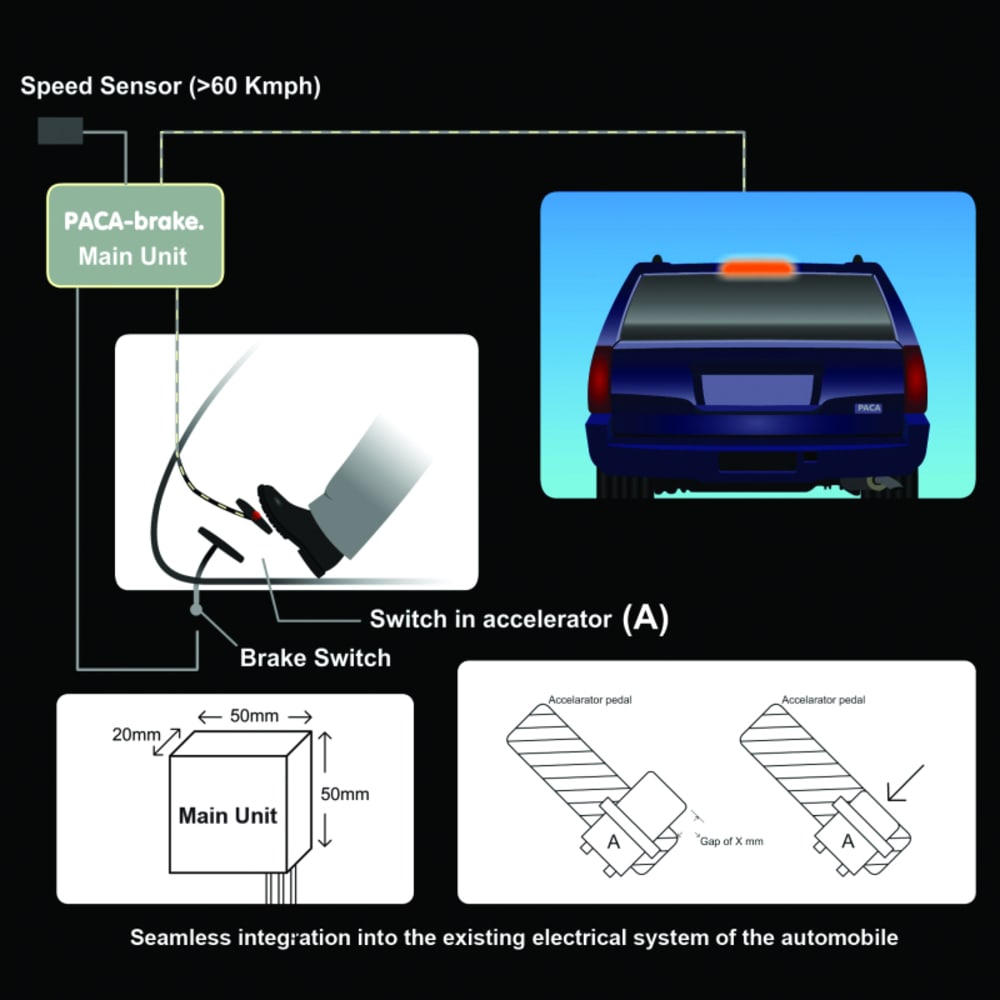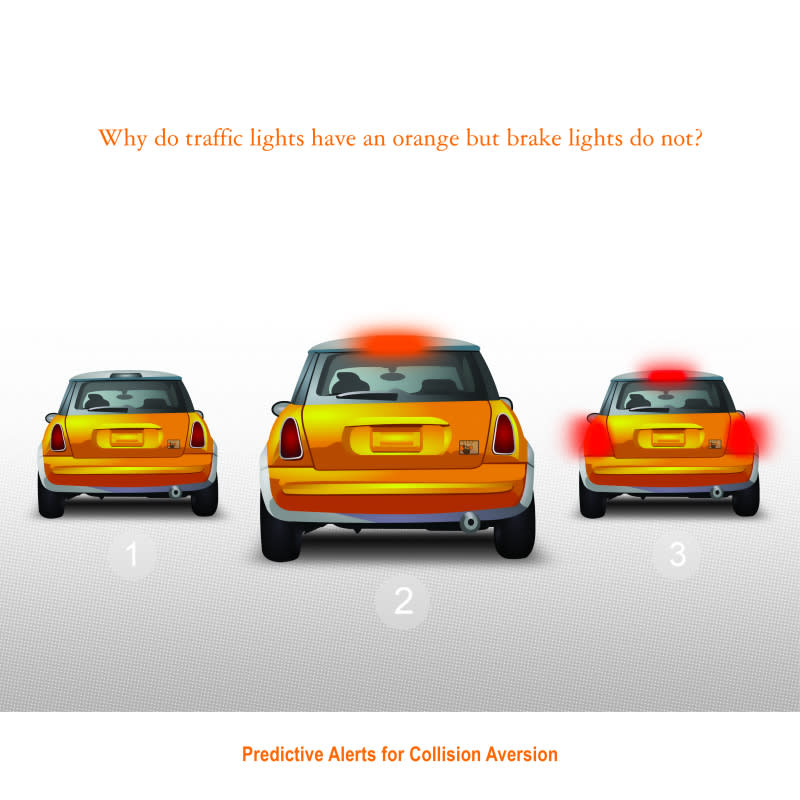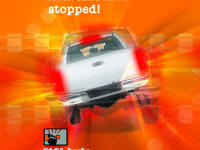Why do traffic lights have an orange but automobile brake lights do not? Predictive Alerts for Collision Aversion (PACA) is a paradigm shift. A life threatening flaw in an existing design is corrected using PACA. Automobiles come only with red brake lights at the rear. This warning system has a major drawback especially at higher speeds, since the red warning light is displayed only AFTER the driver hits the brakes. PACA displays a prior warning orange light to the vehicle in the rear BEFORE the driver in the lead vehicle applies the brakes, thus helping the second vehicle stop in time.
Details: http://muckati.com/paca/index.html
The display of the PACA-brake system is integrated into the third brake light (CMHSL), which is a standard fitment in all automobiles. PACA-brake displays the warning in the way of orange blinking lights when the driver decelerates to a possible braking situation. The blinking is incorporated in the warning so that persons with Colour Vision Deficiency can read the warning.
This simple innovation has been overlooked by automakers around the world who have been too obsessed with technology and cost intensive research and development. In all the advancement of distance sensing radars and high tech sensors, these researchers ironically have forgotten the existence of an intelligent being in the automobile known as the human driver.
1.PACA-brake has the potential to become a mandatory device in ALL vehicles akin to the seat belt. Mission is to reach every automobile on the planet.
2.Active safety system: Prevention better than cure (Most safety systems are passive viz: Seat belt, airbag, crumple zones etc')
3.Easy integration into electrical system during manufacture...no special tooling or design changes required
4. Very cost effective
Who will benefit?
Firstly the road users, public and world citizens since this active safety system is capable of preventing road accidents and thus save millions of lives every year. Second are the manufacturers of the product such as OEMs who can look at a world market for this improved product. Automobile manufacturers can leverage the sale of their products banking on the need for better safety measures demanded by today's buyers.
Down the value chain are others such as Insurance companies who would benefit from the prevention of collisions and lesser deployment of precious resources such as police forces, paramedics, legal services and necessary infrastructure for the aid of these road accidents. Since the product is very cost effective, chances of its deployment are more thus giving a wide reach and affordable by all automobile owners. The product has no direct impact on the environment. Indirectly, the product can benefit the environment by the prevention of collisions that translate to wasted resources such as fuel and other consumables, transport etc'
Looking at the future:
PACA-brake is future proof such that its relevance will not become obsolete even if automobiles change over to electric, alternate fuels, hybrids etc since the operation remains the same. The throttle and brake pedals will remain into the future in all probability.
Like this entry?
-
About the Entrant
- Name:Anjan Cariappa M M
- Type of entry:individual
- Software used for this entry:Flash and Photoshop
- Patent status:pending








